Here’s a region-by-region snapshot of the most interesting EV news for November 2025
We’ve focused on things that matter for market share, pricing, and future models.

- Wall Street Journal
- New York Post
- EVBoosters
- Reuters
- The Guardian
- Reuters
- eea.europa.eu
- EVBoosters
- EVwire
- Reuters
🇳🇴🇸🇪🇩🇰🇫🇮 Nordics / Northern Europe
- Nordics crowned “most EV-ready” in Europe (PwC / EV Readiness Index 2025)
- New eReadiness 2025 report ranks Norway, Denmark, Sweden, Finland + the Netherlands as the most EV-ready countries in the world, combining:
- Very high EV sales share
- Dense public-charging coverage
- Strong, stable policy frameworks (EVBoosters)
- Implication for you (Sweden): Nordics are still benchmark region for infrastructure build-out and policy – good context when you benchmark prices, charging, and TCO vs rest of EU.
- New eReadiness 2025 report ranks Norway, Denmark, Sweden, Finland + the Netherlands as the most EV-ready countries in the world, combining:
- Nordic spotlight from ICCT (a bit earlier but heavily cited in November)
- ICCT “Market Spotlight” on Denmark, Sweden, Finland highlights them as Europe’s EV market leaders, with very high BEV share of new registrations and fast charging-network expansion. (Internationella rådet för ren transport)
🇪🇺 Europe (including broader EU + UK)
- Global EV sales up, Europe still strong – October data
- Research firm Rho Motion: global EV (BEV+PHEV) sales +23% in October 2025 y/y.
- Europe led regional growth, with strong demand in Germany, France, UK; EU also approved more battery projects. (Reuters)
- New data: BEVs now ~13.6% of all new EU cars; PHEVs 7.3%
- European Environment Agency indicator updated in November 2025 shows:
- 2024 registrations in EU: 13.6% BEV, 7.3% PHEV of all new cars.
- Number of new electric cars went from ~600 in 2010 to 2.4 million in 2023. (eea.europa.eu)
- European Environment Agency indicator updated in November 2025 shows:
- ACEA says 2030–2035 CO₂ targets for cars/vans “not achievable” on current path
- European carmakers’ association ACEA warns current policies/market conditions mean 2030–2035 CO₂ targets for cars & vans are at risk.
- Notes that BEVs were 16.1% of new registrations in September 2025 YTD; wants a “smarter regulatory path” and specific approach for vans. (ACEA)
- This matters for you: could impact future incentives, taxes, and company car rules that drive EV leasing offers in EU/Nordics.
- Renault revives Twingo as cheap city EV (sub-€20k)
- Renault unveiled a new electric Twingo (city car) to boost EV sales.
- Launch: early 2026, price under €20,000, using LFP battery from CATL; built in Slovenia.
- Dacia version expected < €18,000. (Reuters)
- This fits your interest in affordable EVs and small-car leasing/TCO in EU cities.
- China’s brands push harder into Europe using UK as gateway
- Guardian piece (7 Nov 2025) describes Chinese manufacturers racing to dominate European roads, using the UK as a key entry point and leveraging lower costs. (The Guardian)
- Very relevant for your “Chinese/Korean EV invasion” angle and future pricing pressure on VW/Volvo/BMW etc.
🌏 Asia (China, wider Asia)
- China & Asia still drive global growth – H1 2025 reports referenced in Nov
- EV Wire / EV Boosters:
- Global BEV sales H1 2025: 5.93 million (+29.1% y/y).
- Europe: 1.19 million EVs (+24.9%), 17.5% market share.
- China still holds the largest share; Asia overall is the main growth engine. (EVBoosters)
- EV Wire / EV Boosters:
- “Asia’s Electric Vehicle Revolution” – policy + industry push
- Overview article (not strictly November, but cited in current discussions) summarises how China, Japan, South Korea have aggressive EV policies, industrial strategies, and charging rollouts to support domestic OEMs and battery manufacturers. (asiangeo.com)
- This underpins why Chinese brands can undercut on price in Europe/Nordics.
(Most strictly date-stamped “Asia only” EV news in early November is embedded in global sales pieces rather than standalone stories.)
🇺🇸 United States
- U.S. vehicle sales fall as EV subsidies expire (Reuters, 4 Nov 2025)
- U.S. light-vehicle sales dropped in October as federal EV subsidies expired, reducing demand for BEVs.
- Tariffs and a softer labour market could further limit EV recovery in 2025. (Reuters)
- EV market share slipping slightly but still higher than 2023
- Recent U.S. data: BEV share ~7.4% of new car sales in Q2 2025, slightly down from 8.0% a year earlier, and essentially flat vs Q1 2025. (CarEdge)
- EV sales down, interest not dead (J.D. Power, 7 Nov 2025)
- J.D. Power: EV sales are under pressure in the U.S., but consumer interest is still growing, especially among existing EV lessees coming back into the market. (J.D. Power)
- Toyota goes big on U.S. batteries – but doubles down on hybrids
- Toyota announces a $14 billion battery plant in North Carolina, its largest U.S. battery investment.
- Batteries will support both EVs and hybrids, aligning with Toyota’s strategy to push hybrids (including PHEVs) as a more realistic mass solution vs pure BEVs in the near term. (Wall Street Journal)
- Tesla launches $60/day rental program as U.S. sales slump
- With U.S. EV sales down and the federal $7,500 credit gone, Tesla is piloting short-term rentals (~$60/day in California) including free Supercharging + FSD (Supervised) to move inventory and convert renters to buyers. (New York Post)
- Signals a more creative sales model and pressure on margins.
🌍 Global cross-region story (touches EU/Asia/US)
- Global EV sales booming, North America lagging
- Carscoops summary (Nov 2025): global EV and PHEV sales remain strong and are expected to stay high in China and Europe, while North America is the outlier with a clear slowdown. (Carscoops)
9th of November 2025
Here’s a detailed update on the EV-landscape, covering the upcoming Volvo EX60, the situation in Germany, and key developments in Asia (China, Korea, Japan).
1. Volvo EX60

Key points
- Volvo has announced the EX60 as its next-generation mid-sized electric SUV, positioned to sit beneath the current large EVs and above smaller models. (TopElectricSUV)
- It will be the first vehicle built on Volvo’s new “SPA3” architecture, purpose-designed for EVs (rather than adapted ICE platforms). (TopElectricSUV)
- Some of the technical/spec highlights announced or reported:
- 800 V architecture for faster charging. (What Car?)
- A potential range around ~300-350 miles (≈480-560 km) according to EPA/estimates. (TopElectricSUV)
- Up to ~400 kW system power (≈536 hp) for performance variants. (TopElectricSUV)
- Reduced cost/cost-efficiency focus: the car is intended to be priced “like a plug-in hybrid” (rather than ultra-premium EV) while improving margins. (motorillustrated.com)
- Manufacturing innovations: cell-to-body (CTB) battery integration, megacasting of large body components to reduce complexity and cost. (TopElectricSUV)
Timing & markets
- The global debut is scheduled for 21 January 2026. (TopElectricSUV)
- Production should start during H1 2026 with roll-out following; U.S. market among early ones. (TopElectricSUV)
- Volvo is offering incentives to smooth adoption: e.g., 1-year free home charging in some markets ahead of the launch. (Yahoo Autos)
Implications
- For you (given your interest in property/EV integration): the EX60’s faster charging and home-charger incentive could make it an interesting option near or post-2026 for integration into your home setup (heat-pump, PV, smart charging etc.).
- From a market-perspective: Volvo is signalling that EVs must become cost-competitive with internal-combustion or PHEV models, not only technologically superior, which is an important shift.
2. Germany / European market situation
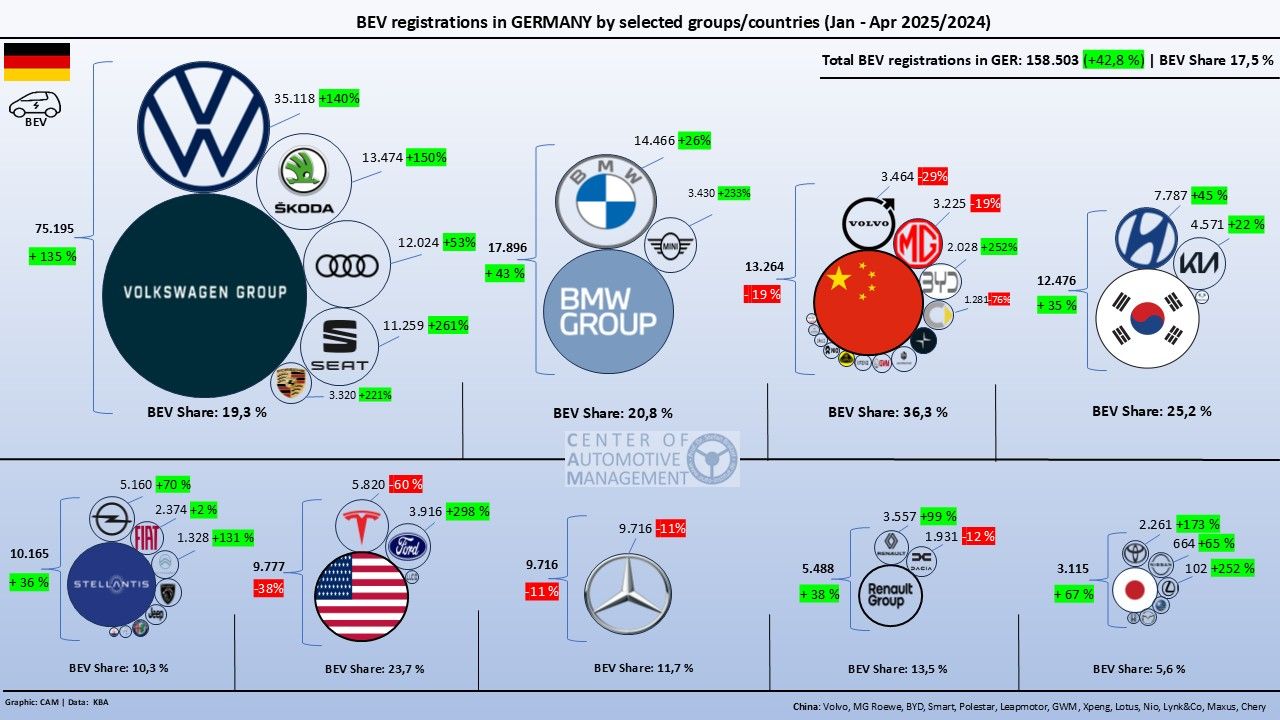
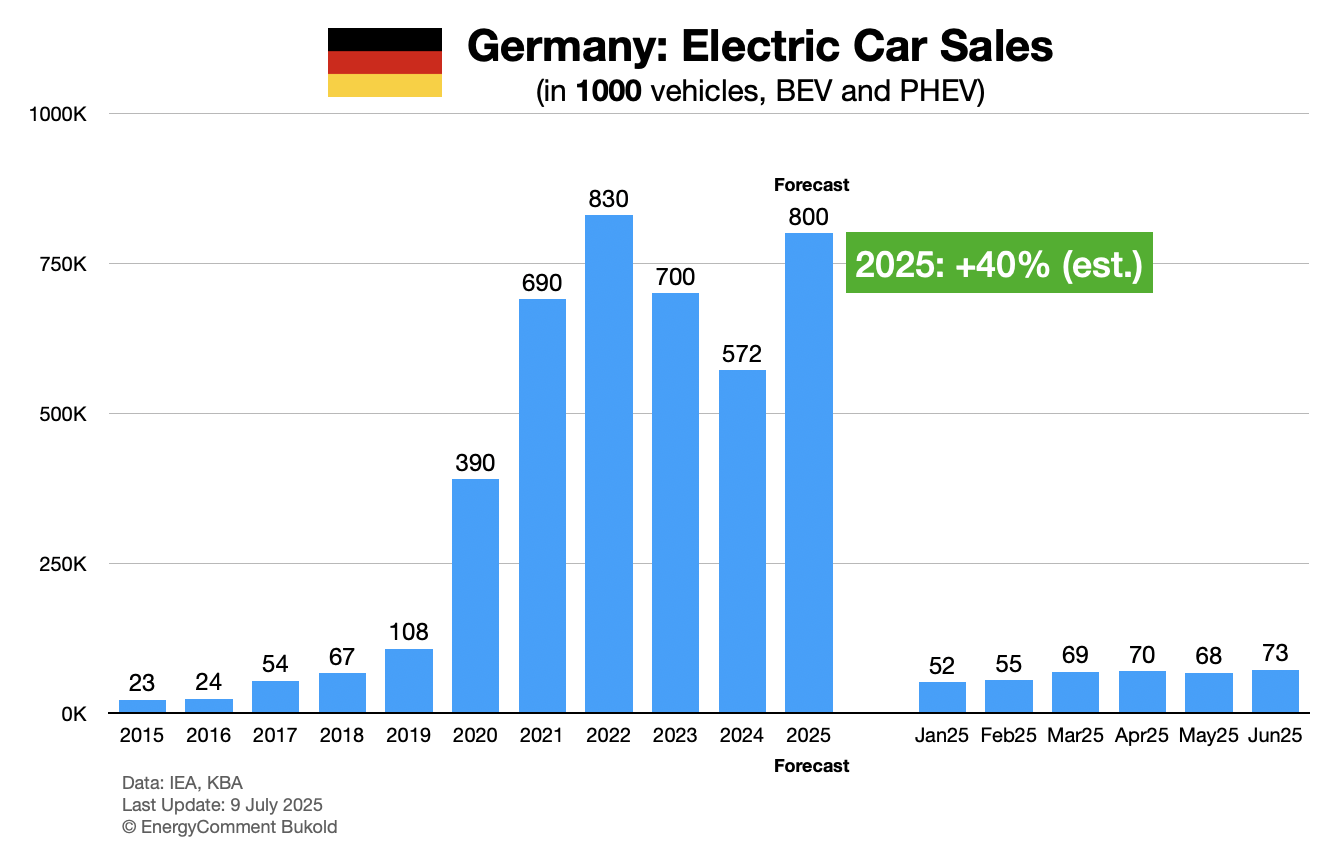

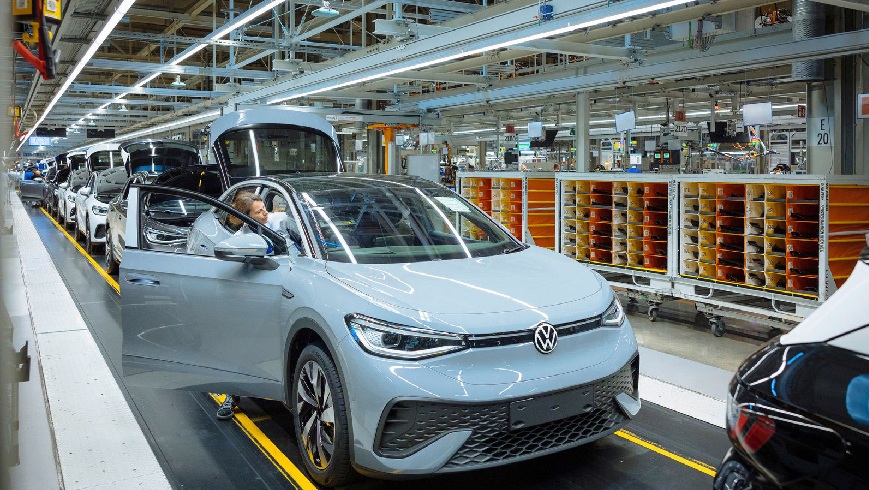
Market trends and developments
- Germany’s EV market (both BEV and PHEV) continues to grow: In September 2025, plug-in models had a 31.1 % share of new registrations in Germany, with volumes up 48.1 % year-on-year. (Autovista24)
- For the first nine months of 2025, BEVs accounted for 18.1 % of new registrations in Germany—slightly above the EU average. (english.news.cn)
Challenges & competitive shifts
- Despite growth in the EV segment, individual brands are facing disruption: Tesla saw its German sales more than halve in October 2025 compared with the same month a year earlier. (Reuters)
- Legacy automakers are under pressure: e.g., Volkswagen Group is pausing production at two German plants due to weaker than expected EV demand. (The Guardian)
- Industrial & structural implications: The German automaking ecosystem is noting that EVs, while growing, involve fewer labour steps and lower complexity potentially affecting jobs and value-chain contributions. (euronews)
Opportunities and infrastructure
- New services and business models: For example, Octopus Energy launched a bundled EV-leasing + charger + tariff product in Germany, signalling growth of holistic solutions to complement EV uptake. (EV Infrastructure News)
Why this matters for Sweden / you
- For Scandinavia (incl. Sweden), developments in Germany are indicative of broader European trends: pricing pressure, demand shifts, infrastructure bundling—which are all relevant for EV-integration at home (home charger, grid load, etc.).
- If you are considering a European-market EV (for your property/EV setup), keeping an eye on German/European infrastructure advances and incentives is smart.
3. Asia (China, Korea, Japan)

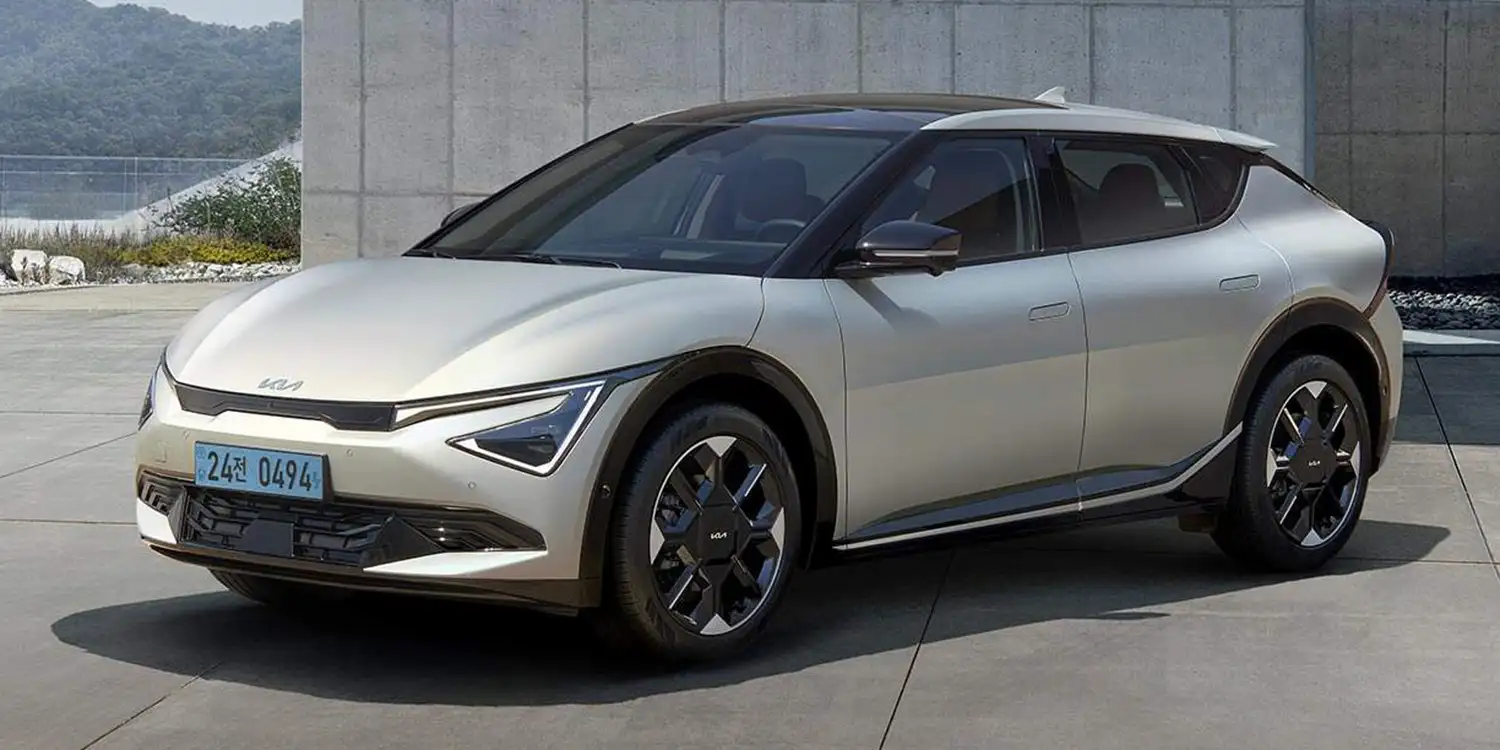
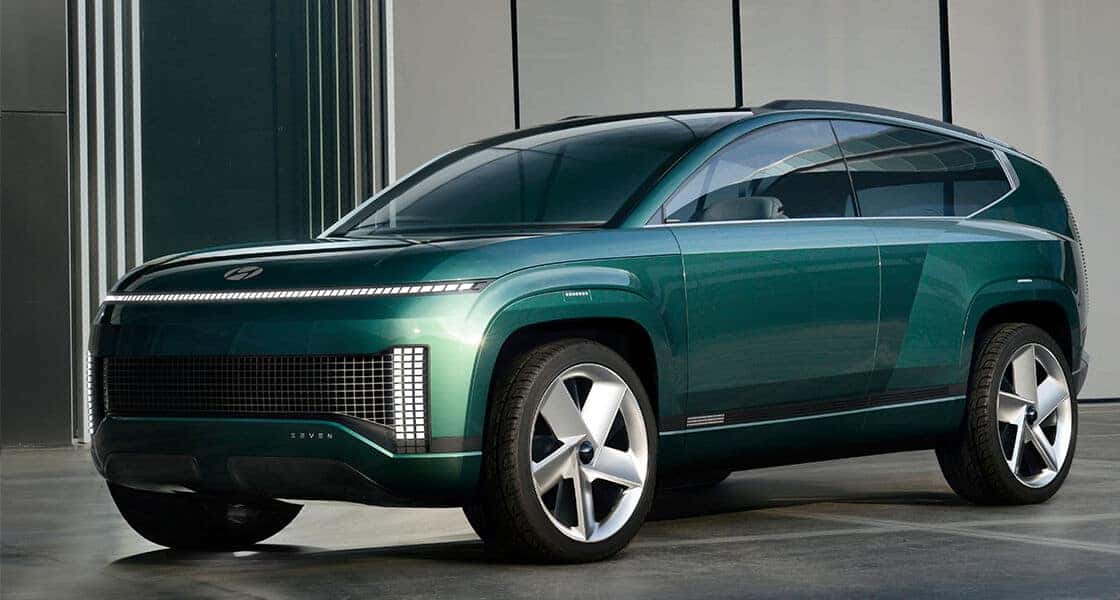

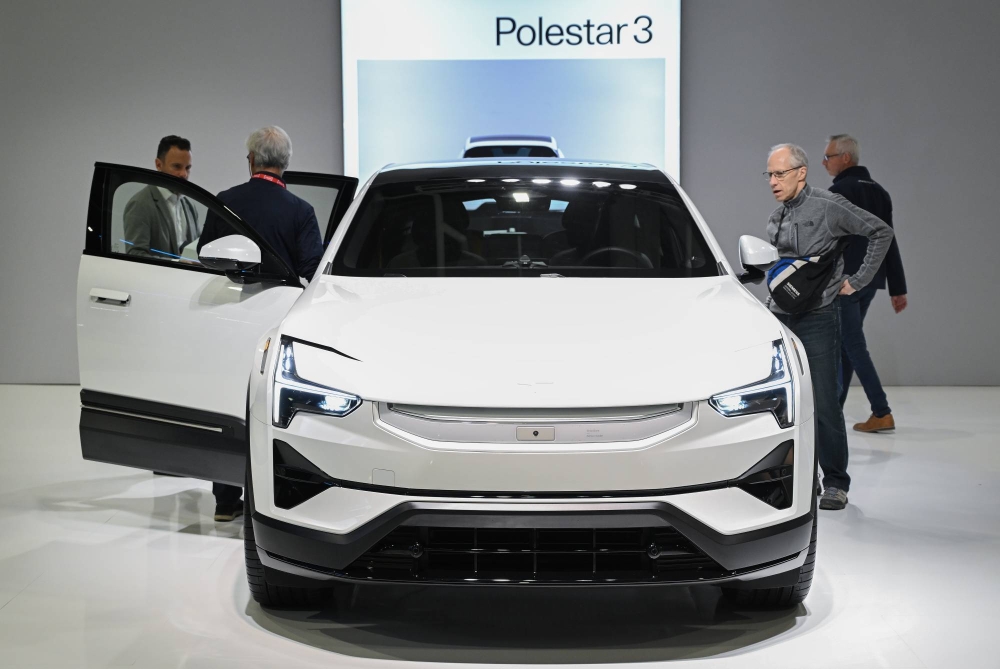
China’s dominance
- As of 2024, China produced 12.4 million electric cars—over 70 % of global production. (IEA)
- A recent report shows that in China, 99 % of BEV owners surveyed would consider buying another BEV — indicating high customer satisfaction and maturity of the market. (asianews.network)
- One example: BYD, the Chinese EV giant, is expanding its global ambitions markedly. (Le Monde.fr)
Japan & Korea
- In Korea and Japan, automakers are stepping up EV efforts and PBV (purpose-built vehicle) strategies:
- Kia (South Korea) has the PV5 electric van (PBV) slated for Europe and Korea, showing a broadening of EV beyond passenger cars. (Wikipedia)
- Asia overall: The region’s EV-revenue is forecast to reach ~$407.6 billion in 2025, highlighting strong growth momentum. (liahnson.com)
Strategic take-aways
- Asian manufacturers are increasingly competitive globally—with price, scale, integration of battery/EV tech—placing pressure on European/US players. (Forbes)
- For your interest in EV and property/home integration: The influx of more competitively priced Asian EVs (and PBVs) might provide more options for home-EV setups, possibly with better cost–benefit for charging infrastructure, solar/EV integration.
4. Summary – What to watch
- The EX60 launch (Jan 2026) by Volvo could be a strong candidate if you’re thinking of an EV aligned with your home/property improvement ecosystem.
- In Germany & Europe: While EV share is growing, pricing, demand, and infrastructure remain critical factors. Incentives, charging solutions (bundled home chargers + tariffs) are emerging.
- Asia: Innovation and competitive pressure from China/Korea/Japan mean more EV model options, possibly better pricing, and broadening EV-vehicle types (vans, PBVs) which may impact home charging infrastructure & planning.
- For your DIY/home project orientation: Consider how upcoming EVs will integrate with home chargers, smart grids, vehicle-to-grid (V2G) potential, and how purchasing price/totals evolve with higher volumes and manufacturing efficiency (as in Volvo’s SPA3 strategy).
Here’s the quick “what’s hot right now” :
EV news snapshot (Thu 21 Oct 2025)
1. BMW i3 Neue Klasse (next-gen)
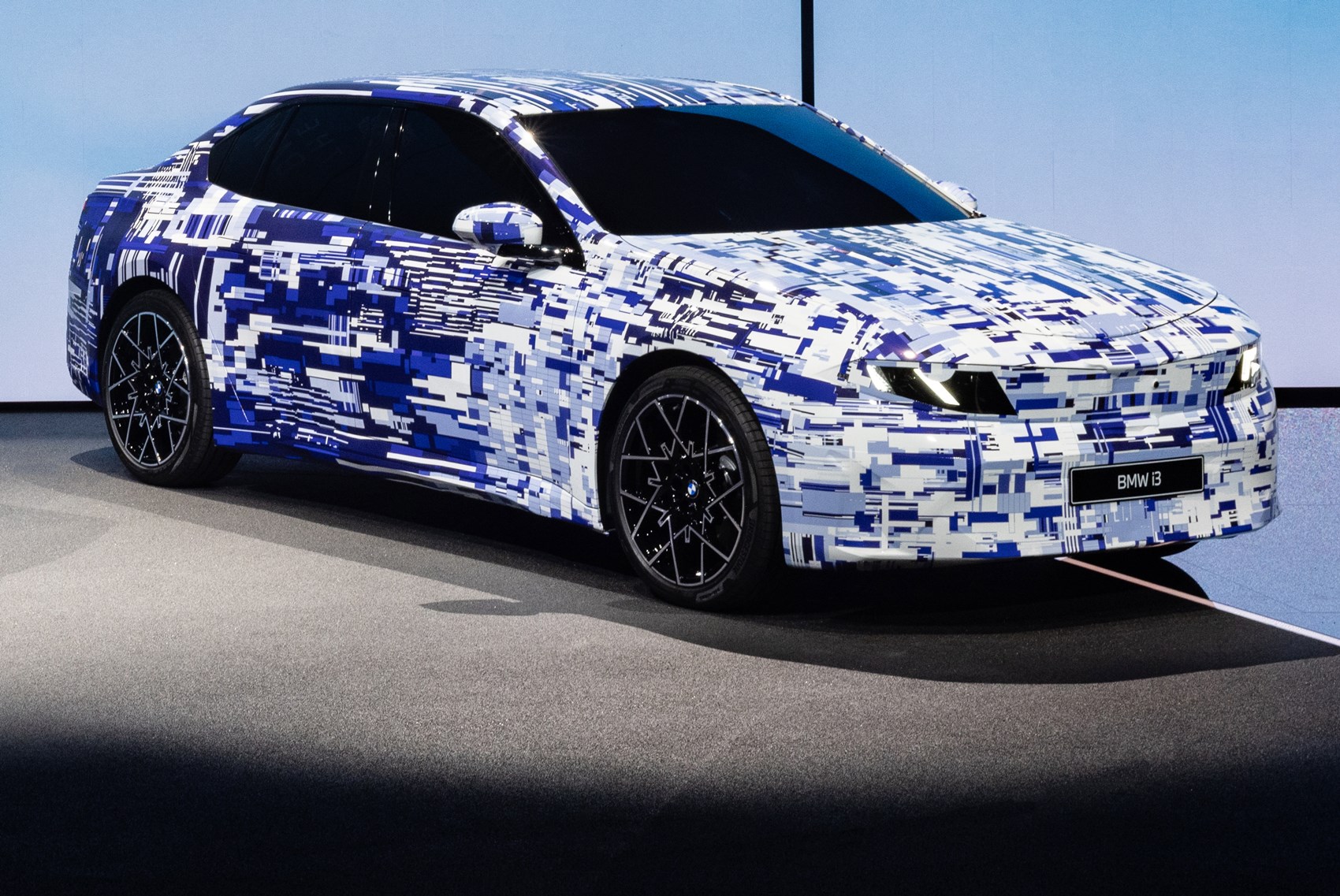

What we know so far:
- BMW is re-using the “i3” nameplate (previously used for the compact city hatch) for a new full-electric sedan version of its 3-Series sized vehicle. (Electrifying.com)
- This new i3 will sit on BMW’s “Neue Klasse” EV architecture (a clean-sheet electric platform) rather than being a derivative of an ICE model. (New Atlas)
- Key technical highlights announced:
- 800-volt electrical architecture enabling very fast charging. (Autocar)
- Battery pack and energy density improvements: BMW claims new generation cells with ~20% more energy and ~30% faster charging vs earlier generation. (Electrifying.com)
- BMW claims range of “500+ miles” (WLTP) for this sedan version. (Autocar)
- Launch timeline & positioning:
- Final production version expected early 2026, with full sales beginning later. (Electrifying.com)
- It will be positioned as an electric counterpart to the 3-Series (sedan) rather than as a small city EV. (New Atlas)
Why this is significant:
- The shift to a ground-up EV sedan (rather than ICE-derived) signals BMW treating electrification as a core strategy, not just an add-on.
- With 800 V architecture + high energy density cells + fast charging, BMW aims to compete strongly with the likes of Tesla Model 3 / other premium EVs in terms of range and charging speed.
- The name reuse (“i3”) is interesting: it may cause confusion (given the earlier i3 hatchback), but it also gives continuity and recognisability.
Things to keep an eye on / questions:
- How much will it cost? The previous small-i3 was relatively premium; this new version may cost more.
- Real-world range and charging performance (claims are strong, but real usage always matters).
- Whether BMW offers multiple variants (e.g., rear-wheel vs all-wheel drive, performance “M” version). Some sources suggest yes. (Car and Driver)
- Availability in different markets (Europe, US, China) and how charging infrastructure will support its fast charging claims.
Short summary:
BMW’s new i3 is a major step forward for the company in EVs: a full-sized electric sedan built on a new platform, with high ambitions for range and charging, expected around 2026.
2. Volvo EX60

What we know so far:
- The EX60 is a forthcoming fully electric mid-size premium SUV from Volvo. (Volvo Cars)
- It will be built on Volvo’s new SPA3 platform — the first Volvo to use it. (Wikipedia)
- Very strong battery / technology focus:
- Two battery chemistries will be offered: for example lithium-iron phosphate (LFP) for cost/volume, and higher-density nickel-manganese-cobalt (NMC) for range/performance. (InsideEVs)
- Use of prismatic cell format and “cell-to-body” structural integration in the battery pack (the battery becomes part of the vehicle structure) to improve efficiency and packaging. (EVDANCE)
- Launch timeline:
- Official reveal set for 21 January (Volvo announced) and production at the Torslanda plant in Gothenburg to begin in first half of 2026. (Volvo Cars)
- Strategic importance: Volvo views the EX60 as a “cornerstone” in its move to full electrification (Volvo aims to be fully electric by 2030). (Volvo Cars)
Why this is significant:
- Volvo is aggressive in upgrading whole vehicle architecture, battery integration and manufacturing, not just adapting existing models. The EX60 seems to be a flagship of that effort.
- The dual-chemistry battery approach gives flexibility: a more affordable entry version (LFP) and a high-capability version (NMC) depending on market/segment. That could help volume as well as premium positioning.
- Structural battery integration could yield better efficiency (longer range from same battery mass) and better packaging (more interior space).
- For buyers, a Swedish premium brand stepping up in EVs means more choice versus traditional ICE vehicles and more competition among EVs.
Things to keep an eye on / questions:
- Pricing. Early spec suggests around US $60k starting (in US markets) but this may vary. (Car and Driver)
- Actual real-world range, charging speed, and how the prismatic cell + structural battery design plays out in reliability and maintenance.
- Timing of global availability (Europe, US, Asia) and how quickly Volvo can ramp production.
- Software and system maturity — earlier Volvo EVs (e.g., EX90) have had software issues. (The Verge)
Short summary:
The Volvo EX60 looks to be a key EV model for Volvo: a mid-size premium SUV built from the ground up for EVs, with advanced battery tech, launching in 2026.
3. Quick comparison & take-aways
| Model | Segment | Technology Summit Points | Launch Time |
|---|---|---|---|
| BMW i3 | Electric sedan (~3-Series) | Neue Klasse platform, 800 V, 500+ miles range claim | Early 2026 sales |
| Volvo EX60 | Electric mid-size SUV | SPA3 platform, prismatic cells, dual battery chemistry | Production 1H 2026, reveal Jan 2026 |
Take-aways for EV buyers / watchers in Europe (and Sweden):
- If you are looking for a premium EV sedan from a known brand, BMW’s i3 looks promising — but likely will carry premium pricing and thus initial exclusivity.
- If you prefer a family-friendly SUV form factor with advanced EV tech, the Volvo EX60 is worth watching — especially in Sweden/Europe where Volvo has strong presence and infrastructure.
- Infrastructure (fast charging, network coverage) will still matter a lot: high charging speeds only matter if chargers exist locally.
- Early adoption may mean “first version” issues (software, production ramp-up). It can pay to wait a little for 1-2 years after launch unless you are fine with early-adopter risks.
- Price, incentives (in Sweden/EU) and total cost of ownership will influence the value proposition significantly.
EV news snapshot (Thu 16 Oct 2025), split by region:
Europe
- Record month: Global plug-in sales hit 2.1 million in Sept 2025 (+26% YoY). Europe contributed ~428k (+36% YoY). (Reuters)
- BYD expansion: Spain is the frontrunner for BYD’s 3rd European plant (after Hungary), per Reuters sources. (Reuters)
- EU–China trade backdrop: Analysis suggests the EU’s EV tariffs are unlikely to block Chinese brands’ profitability; Beijing has rolled out retaliatory probes. (gmfus.org)
- Germany revisiting aid: Reports point to targeted EV purchase incentives returning (including used EVs) as political proposals resurface. (Clean Energy Wire)
USA
- Federal credit expired: The $7,500 federal EV tax credit ended on Sept 30, 2025 (unless you had a binding purchase by then). Expect a Q4 dip after the pre-deadline rush. (irs.gov)
- Leasing workarounds pulled: GM and Ford dropped plans to route leases through captive finance to capture the credit post-expiry. (Reuters)
Asia
- China’s charging blitz: New 3-year plan targets 28 million charging facilities by end-2027 and >300 GW of public charging capacity—enough for 80 million EVs. (english.news.cn)
- China–India WTO case: China has filed a WTO complaint over India’s EV & battery subsidies; consultations are the first step. (The Times of India)
I

October/November 2025
Here’s a summary of some recent EV / electric-vehicle news (Oct / Nov period and around that) plus specs for various models, and what is known so far about the Renault 4 EV (E-Tech). The state of “news” is fluid, so some items are recent announcements or interviews.
- Porsche Cayenne EV
The Cayenne EV is expected to be fully revealed in November 2025, with new tech for charging, chassis, infotainment, etc. (Edmunds) - Tesla Model Y Performance (2025 / UK market)
- Output: ~ 460 bhp
- 0–60 mph in ~ 3.3 seconds
- Estimated range: ~ 360 miles (WLTP / equivalent) (The Electric Car Scheme)
- Renault 4 E-Tech (Renault’s revived small EV)
This one is quite interesting, as it’s a new electric version of an old icon. Here are its known / reported specs: Spec Value / Detail Battery 52 kWh Li-ion (NMC) for most versions (Electrifying.com) Motor / Power ~ 150 hp (≈ 110 kW) (Top Gear) Torque ~ 245 Nm (carwow.co.uk) 0–60 mph (≈ 0–100 km/h) ~ 8.2 seconds (carwow.co.uk) Range (WLTP / equivalent) ~ 241–247 miles (~ ≈ 388–398 km) (Electrifying.com) Alternative / lower spec “Entry” version rumored with 40 kWh battery and 90 kW motor, theoretical ~ 308 km range in some markets (CarExpert) Dimensions & weight ~ 4,144 mm length (compared to R5’s 3,922 mm) (carmagazine.co.uk) < 1,500 kg gross / curb weight in many trims (carmagazine.co.uk) Charging Up to 100 kW DC fast charge (10–80%) (Electrifying.com) Other features Vehicle-to-load (V2L) capability standard (Electrifying.com) Also, concept or variant info:- Renault revealed a Renault 4 Savane 4×4 concept with all-wheel drive. The regular Renault 4 has ~ 148 hp (110 kW) and ~ 245 Nm torque. (InsideEVs)
- Renault itself advertises up to 150 hp, 247 miles range in some markets on its site. (renault.co.uk)
Additional EV Models / Updates with Known Specs
Here are some other EVs / models with relatively recent spec data (some from 2025, some announced or updated):
- XPeng G6
- Battery options: 66 kWh LFP, 68.5 kWh LFP, 80.8 kWh LFP, or 80.8 / 87.5 kWh NMC depending on market (Wikipedia)
- Motor output: 190–218 kW (single / RWD) or up to 358 kW (AWD version) (Wikipedia)
- Range (CLTC): ~ 580–755 km depending on battery / trim (Wikipedia)
- Charging: AC 11 kW, DC fast charging 215–280 kW (Wikipedia)
- Leapmotor B10
- BYD Tang L (EV variant)
September/October 2025
Europe
- BYD just outsold Tesla in the EU for the 2nd straight month (Aug sales), as PHEVs + BEVs drove a broader market rebound; Tesla’s EU share fell while BYD ticked up. (Reuters)
- EU BEV share YTD sits ~15.8% and registrations are stabilising; ACEA’s fresh report dropped this week. (acea.auto)
- Tariffs & supply chain chess: CATL says it’s open to helping EU battery startups despite Chinese tech export controls—Europe wants local cells to cut costs/risks. (Financial Times)
China / wider Asia
- China’s EV penetration is at/near majority: multiple trackers put 2025 share ~50–60% (plugins), with August retail penetration ~55%. Xiaomi and XPeng are surging into Q4. (IEA)
- BYD’s halo moment: its Yangwang U9 “Xtreme” just claimed the world’s fastest production-car top-speed—first time an EV holds the crown. (Business Insider)
- BYD Europe build-out: Hungary car plant targeted to start by end-2025; adviser says EU battery production is next to support ~500k local capacity incl. Turkey. (Reuters)
South Korea
- Korea’s EV share is climbing: EVs are now ~1 in 5 new cars; BEV sales up ~48% YTD Jan–Aug on the back of new, more affordable models. (koreaherald.com)
- New model momentum: Kia EV5 pricing for Europe/Korea lands (~£39k UK) ahead of wider deliveries; Hyundai IONIQ 9 keeps racking up awards. (EV Powered)
United States
- Federal EV tax credits end next week (Sep 30). IRS has posted final guidance; a late-September pull-forward is boosting sales now, but a post-credit dip is widely expected. (irs.gov)
- Record U.S. EV month anyway: August hit a new high (~146k EVs; ~9.9% share) as buyers rushed before credits expire. (Cox Automotive Inc.)
- Policy/industry shifts: Automakers asked EPA to ease 2027–2032 tailpipe rules; meanwhile Honda is ending Acura ZDX production amid “market conditions.” (Reuters)
August/September – 2025
- New platforms & flagships (800 V, big range, fast DC) Porsche Macan Electric and Audi Q6 e-tron are the first on the shared PPE platform: 800 V, up to 270 kW DC and ~21 min 10–80%—this is the new mainstream premium benchmark. (Porsche Newsroom)
- BMW’s Neue Klasse is next BMW’s all-new EV architecture (first up: the next iX3/“Neue Klasse”) promises up to 30% more range, 30% faster charging and 25% better efficiency vs today’s cars; production in Debrecen (HU) ramps from late 2025. (Audi MediaCenter)
- Affordable EV wave (Europe) Kia EV3: compact SUV with up to ~600 km WLTP and ~30–31 min 10–80% on 400 V (≈128 kW peak). Renault 5 E-Tech: ~100 kW DC, priced from ~€25k in many markets. Citroën ë-C3: sub-€25k city crossover, ~44 kWh, ~100 kW DC. (kiapressoffice.com)
- Ultra-fast charging records Lotus Emeya has set the current headline figure: 10–80% in 14 min, peaking around 402 kW in independent P3 testing—evidence that >350 kW charging is now real in the wild. (lotuscars.com)
- Battery tech leaps (near-term impact likely in Chinese and EU-built models) CATL Shenxing Plus (LFP) claims 600 km of range added in 10 min and up to 1,000 km CLTC packs—expect more 4C fast-charge cars to appear on this chemistry. (Claims from CATL; rollout depends on automaker adoption.) (catl.com)
- Driver-assist & autonomy Mercedes DRIVE PILOT (SAE Level 3) approved up to 95 km/h on German motorways (eyes-off in defined conditions). Polestar 4 is slated to add Mobileye Chauffeur (future eyes-off highway capability) on top of SuperVision. (Mercedes-Benz Group)
- Policy & infrastructure (EU) AFIR is kicking in: from 2025, fast-charging (≥150 kW total per site) every 60 km along the TEN-T core network—good news for real-world road-tripping. EU Battery Regulation brings battery passports from Feb 2027; Volvo EX90 is launching one early. (IEA)
- Market & geopolitics The EU has imposed extra tariffs (up to ~38%) on China-built EVs; in parallel, Chinese brands localize: BYD says its Hungary plant starts production by end-2025 (reports of possible staging/slow ramp). (Reuters)